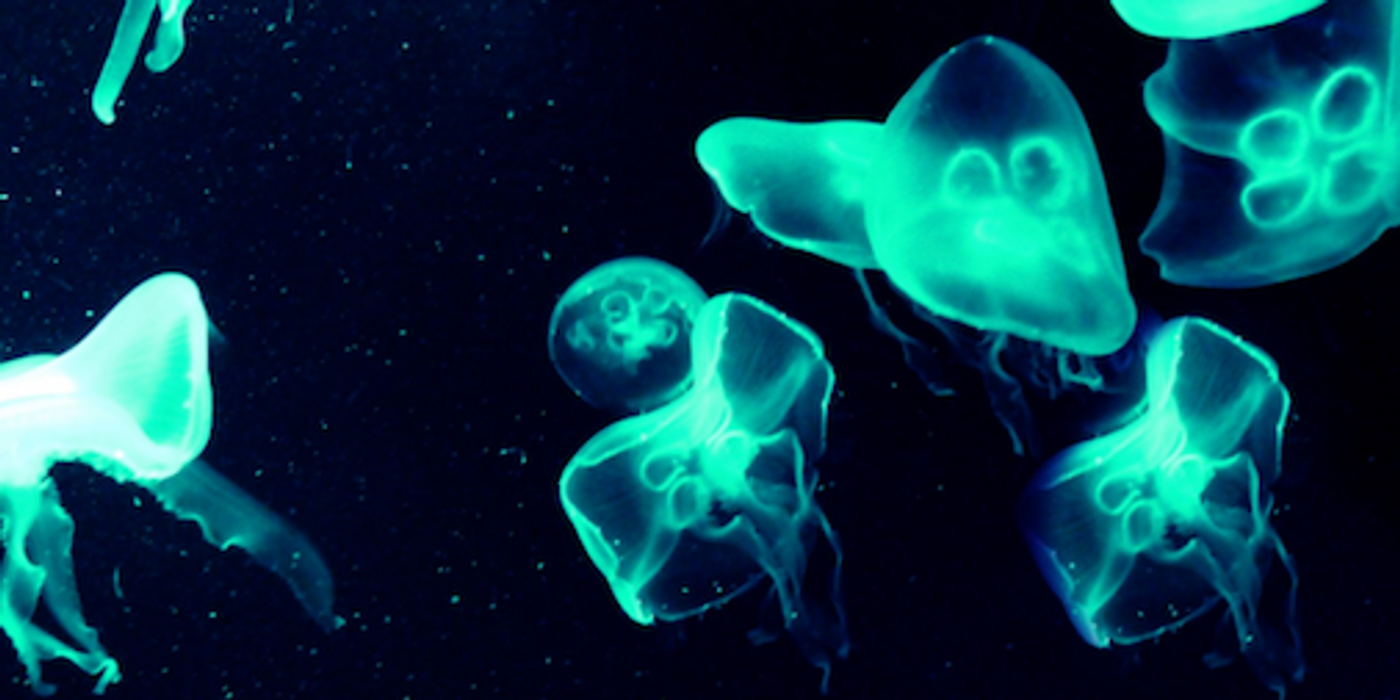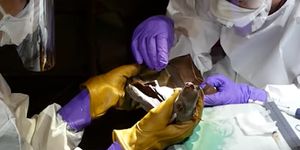Bioluminescence - Now Visible Outside of the Body
Natural bioluminescence can be observed in animals like jellyfish or fireflies; scientists adapted their glowing proteins for use in the research lab. Now that tool is being taken a step further by investigators who boosted the power of those fluorescent molecules. Now their glow can be seen outside of the body because they are so bright. The technique was tested by tracking cancer cells in a mouse model and the activity of brain cells in monkeys. This tool has a wide range of applications, however. The work has been reported in Science and is described in the following video.
An enzyme called luciferase, adapted from fireflies, acts on the molecule D-luciferin, to catalyze the emission of a greenish glow. Engineers have tinkered with that reaction to make it more efficient. Now, instead of just making it faster, researchers led by Atsushi Miyawaki altered both enzyme and substrate to generate AkaBLI, a synthetic bioluminescent system that has been bioengineered for in vivo use.
Previous research has demonstrated that a manufactured luciferin, AkaBLI is able to cross the barrier protecting the brain; it emits a reddish light that is easier to see in biological tissues. Because it doesn't match well with natural luciferase, the team made some changes, improving the pairing. The protein they made, Akaluc, is also expressed at higher levels in cells and is more efficient.
When tested in the brain of a mouse, the reaction between Akaluc and AkaBLI generated a signal that was one thousand times stronger than what is seen from the luciferase reaction. The cells could also be observed in the lung, which may have applications in transplantation.
Bioluminescence can be easily introduced simply by putting AkaBLI in the drinking water of lab animals. Injecting the molecules also works, and produces a stronger glow.
"The fundamental improvement, though, is the practical applicability for in vivo physiological studies," noted Miyawaki. Changes in brain activity and structure that may be associated with behavior can now be easily observed over time in living animals.
Testing this idea, the investigators exposed mice to both new and familiar cage environments; over several days, neurons in the hippocampus were tracked and recorded. "This is the first time such a small ensemble of a few dozen deep neurons related to a specific learning behavior can be visualized non-invasively," said Miyawaki.
Deep-brain neurons were also followed for over a year in a marmoset monkey using AkaBLI. The potential for this type of lasting and stable bioluminescence for applications in the study of neural circuitry during natural behaviors, noted Miyawaki, is intense.
Sources: Science Daily via RIKEN, Science









